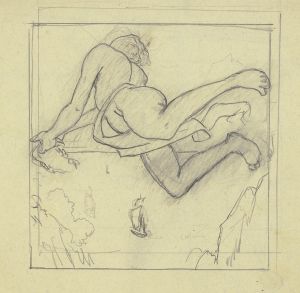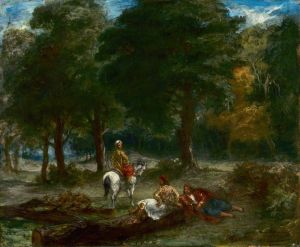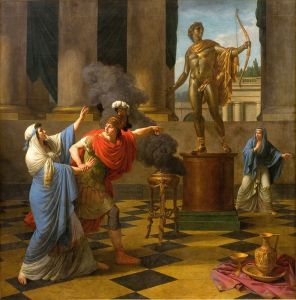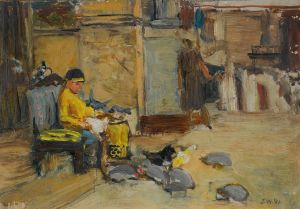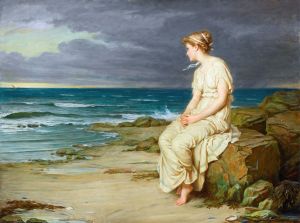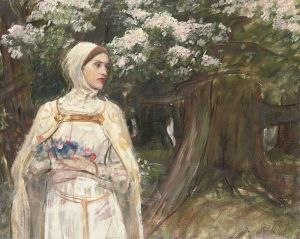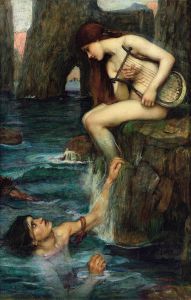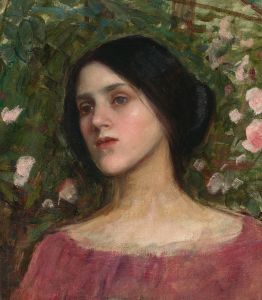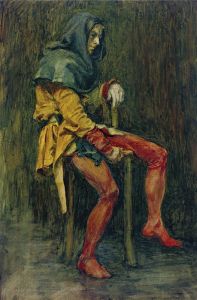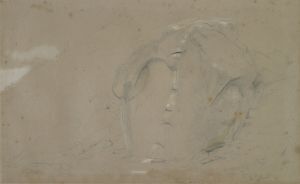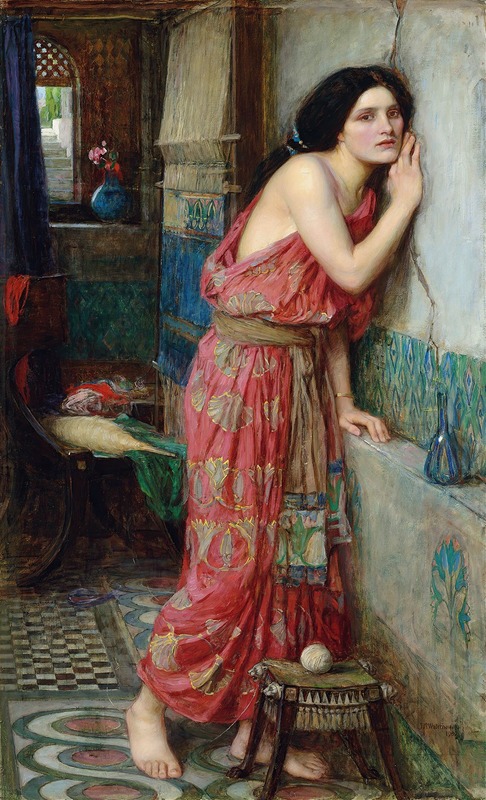
Thisbe
A hand-painted replica of John William Waterhouse’s masterpiece Thisbe, meticulously crafted by professional artists to capture the true essence of the original. Each piece is created with museum-quality canvas and rare mineral pigments, carefully painted by experienced artists with delicate brushstrokes and rich, layered colors to perfectly recreate the texture of the original artwork. Unlike machine-printed reproductions, this hand-painted version brings the painting to life, infused with the artist’s emotions and skill in every stroke. Whether for personal collection or home decoration, it instantly elevates the artistic atmosphere of any space.
John William Waterhouse's painting "Thisbe" is a notable work by the English Pre-Raphaelite artist, known for his depictions of classical mythology and literature. Waterhouse, who lived from 1849 to 1917, was part of the later phase of the Pre-Raphaelite Brotherhood, a movement that sought to return to the detail, intense colors, and complex compositions of Quattrocento Italian art.
"Thisbe" is inspired by the tragic love story of Pyramus and Thisbe, which originates from Ovid's "Metamorphoses," a narrative poem that has been a rich source of inspiration for artists and writers throughout history. The story of Pyramus and Thisbe is often considered a precursor to Shakespeare's "Romeo and Juliet," as it involves two lovers who are kept apart by their feuding families and meet a tragic end.
In Waterhouse's painting, Thisbe is depicted in a moment of contemplation or sorrow, capturing the emotional depth and drama typical of his work. Waterhouse was known for his ability to convey the psychological states of his subjects, often focusing on themes of love, loss, and longing. His use of color and composition in "Thisbe" reflects the influence of the Pre-Raphaelite style, characterized by its vibrant palette and attention to detail.
The painting likely features Thisbe in a setting that evokes the ancient world, consistent with Waterhouse's interest in classical themes. His works often include elements that suggest a narrative, inviting viewers to engage with the story behind the image. Waterhouse's skill in rendering textures and fabrics is evident in the depiction of Thisbe's attire, which would have been carefully crafted to reflect the historical and cultural context of the myth.
Waterhouse's choice to focus on Thisbe alone, rather than depicting the more commonly illustrated scene of her tragic encounter with Pyramus, highlights his interest in exploring individual emotion and the inner lives of his characters. This approach allows the viewer to connect with Thisbe on a personal level, emphasizing her role as a tragic heroine.
"Thisbe" is part of Waterhouse's broader body of work that frequently revisits themes from mythology and literature, demonstrating his fascination with stories that explore the complexities of human emotion and experience. His paintings are celebrated for their beauty and emotional resonance, and "Thisbe" is no exception.
Waterhouse's art continues to be appreciated for its aesthetic qualities and its ability to capture the timeless nature of mythological and literary themes. His work remains influential, and "Thisbe" is a testament to his skill in bringing ancient stories to life through the medium of painting.





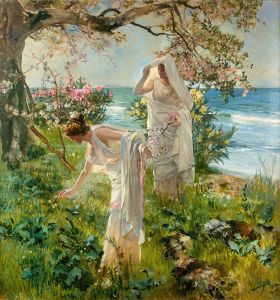
![View on the Nile looking towards the pyramids of Dashour [Dahshûr]and Saccara [Saqqârah].](/imgs/217572/s/david-roberts-view-on-the-nile-looking-towards-the-pyramids-of-dashour-dahshurand-saccara-saqqarah-6cb692fe.jpg)
